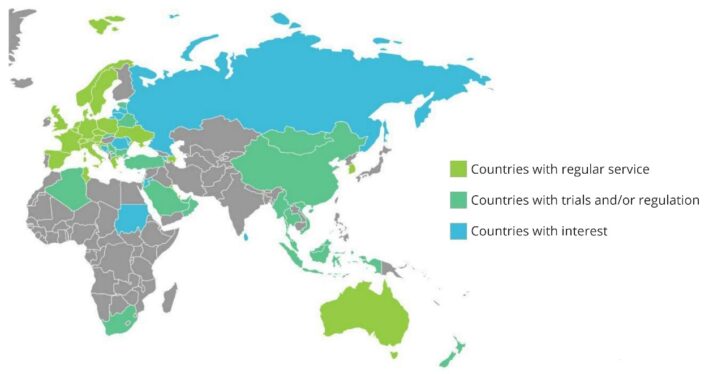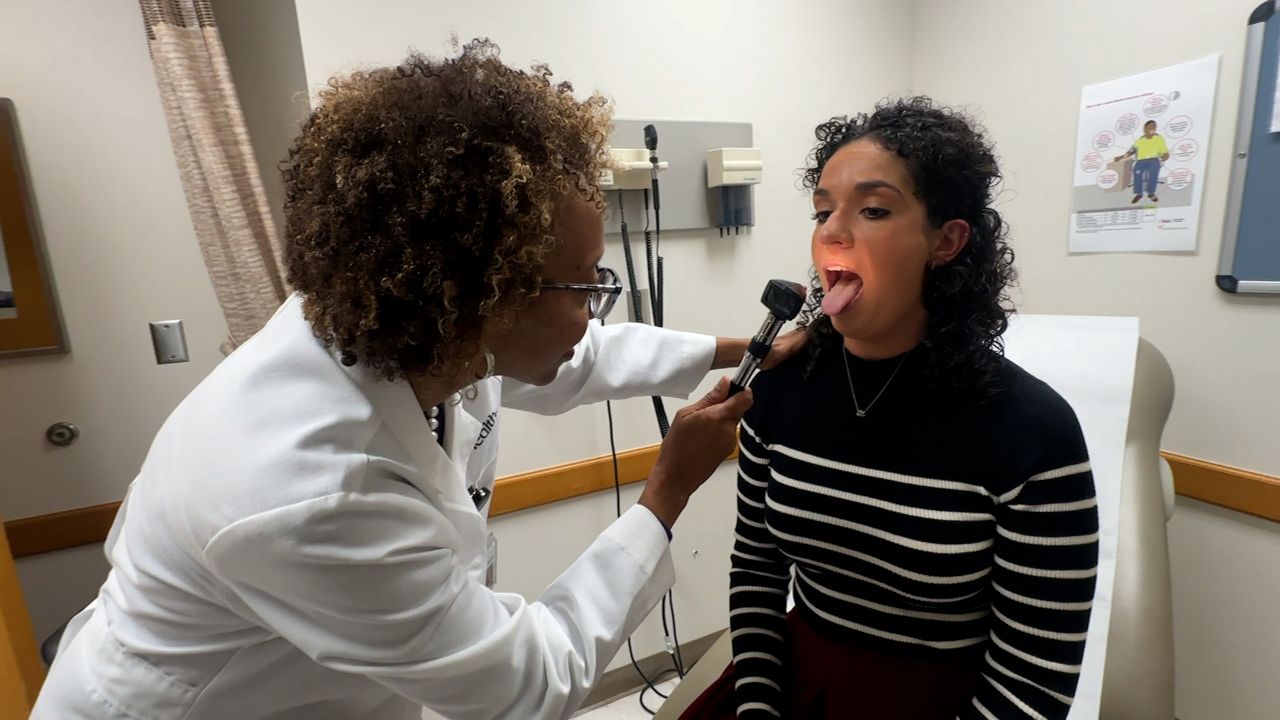World
Bierhorst Highlights the Role of Metadata and Voice Control – Radio World

Following her keynote speech at the WorldDAB Automotive conference in June (read about it here), we asked WorldDAB President Jacqueline Bierhorst to expand on her themes for the Radio World ebook “World Digital Radio.”
Radio World: Do you have a key takeaway from that event?
Jacqueline Bierhorst: I’m proud of the collaboration being done to keep radio in the forefront of the car.
The atmosphere was fantastic, the location in Prague was great, and antenna manufacturers, chip manufacturers, the EBU, private stations, OEMs, Radioplayer, Xperi, Edison Research all participated, along with many people who joined us virtually from all over.
We are working to assure easy access to radio, in the highest possible quality. We’re all doing our best to keep our beautiful medium — which is used by 84% of the Europeans for at least two hours a day — at the heart of the car.
RW: The European mandate that new cars include DAB since the end of 2020 has been a critical part of the success of DAB+. What additional regulatory steps would you like to see?
Bierhorst: Yes, that has been a major step. We also see legislation being considered outside of Europe, as in some Arab states. Our steering board is considering whether we should push for additional actions such as encouraging DAB+ in commercial vehicles. But we’re happy to have more than 96% of new cars equipped.
RW: What’s the next important milestone you’d like to accomplish? How will you measure success?
Bierhorst: It used to be that a country’s digital switchover was the mark of success, but now it’s broader than that. Success stories also have to do with adoption by listeners and the joy they find in the digitization mix.
In the U.K. for example, DAB’s share of in-car listening has reached a record high of 57.5% — up seven percentage points in just one year.
DAB+ is an exciting new form of distribution, and communicating those success stories is one of the goals of my presidency. AM is being switched off in many countries, and FM is being succeeded by a combination of IP and DAB+.
Now we see commercial broadcasters using DAB+ as extensions of their brands, like Capital in the U.K. launching a national DAB+ popup station called “Capital (Taylor’s Version)” to celebrate Taylor Swift tour coming to the U.K. And as we’ve seen in the Netherlands and Belgium, DAB+ can bring a new elan. Digital radio offers a new distribution method compared to the older formats of AM and FM. It brings new possibilities.
RW: The revolution in car infotainment screens feels like a threat to the presence of broadcast radio. How should broadcasters respond?
Bierhorst: They should be aware of the importance of metadata. They should explore hybrid technologies like RadioDNS or, for dynamic metadata, Radioplayer or Xperi.
Within WorldDAB we seek to bring different, sometimes competing organizations together in our working groups to address issues like metadata, phonemes and aliases. Metadata is so important, whether you listen to the radio, or via an app that you accessed through IP, which may also connect you to broadcast service combined with IP.
We all need to talk and work together. That’s why I’m on the barricades.

RW: Why are aliases and phonemes important?
Bierhorst: There is increasing use by listeners using voice commands to navigate radio stations, particularly as the list of stations is becoming much longer. Smart speakers and virtual assistants use voice recognition and voice reproduction. Voice recognition is to understand what is said to them; voice reproduction is to confirm choices and results to users in natural language.
Many typical words and phrases can be represented by plain text. But two situations are more difficult: when listeners ask for a radio station by something other than its exact official name, and when a station name isn’t said the same way as it’s written down in text.
Aliases and phonemes help listeners find radio stations. WorldDAB has produced guidelines for broadcasters and manufacturers, available here.
RW: There was some news coverage in the United Kingdom a few months ago about “millions of DAB radio listeners” being “locked out” of stations that were moving from DAB to DAB+. How much of an issue is this?
Bierhorst: In some early DAB-adopting countries, particularly the U.K., some mostly pre-2014 receivers didn’t incorporate the more efficient DAB+ codec.
The U.K. regulator, Ofcom, conducted research on this last year. They found it only affected a minority of sets in use. They estimated that 66% of in-home DAB owners could access DAB+ on their current radio set, and said this will increase as new units enter the market, particularly in cars.
Ofcom said that without regulatory intervention, some broadcasters are already migrating their services from DAB to DAB+. They noted that Classic FM, owned by Global, would be upgrading from DAB to DAB+ across the country starting in January 2024 and that Absolute Radio Country and Absolute Classic Rock, owned by Bauer, would be launched on DAB+ last fall. It said that industry-led initiatives like these would be the best route in the near term, with businesses making the decisions of what would help their listeners.
So clearly it’s not impacting on the stations, who have weighed the considerations and moved to the newer, more efficient codec.
RW: What should we know about “small-scale DAB”?
Bierhorst: We’re describing these as “new approaches to DAB+” because, although the term “small-scale DAB” is widely known, it was coined in the U.K. for a specific solution for a more local tier of DAB than the existing national and county-wide multiplexes. Ofcom is rolling out this new tier with more than 80 multiplexes licensed and approximately 50 already on air, with a further two rounds of licensing under way.
But the new approaches more broadly complement existing DAB+, and don’t have to be smaller by definition. We see it as being about developing and implementing wider new approaches, which could help increase the availability and diversity of broadcast radio services by reducing barriers to entry.
RW: I’m curious how you feel about the instances of the sunsetting of FM.
Bierhorst: I don’t see it as a goal; it will happen organically. Parts of Bavaria have been switched off, as have areas in the north of Italy. Schleswig-Holstein will be switched off. Norway has switched off.
But you don’t force it on people. FM will become less important in more countries. In the Netherlands, 70% of listening is through digital devices, and we only started marketing DAB+ in 2014. But we still have FM too.
RW: Can you name a few other broadcast organizations that are embracing the possibilities of digital radio?
Bierhorst: Joe in Flanders is one. DAB gave DPG Media Group a boost towards growth; their digital strategy embraces both DAB+ and IP. Another is LBC in London, a local news and talk station that was able to go national thanks to DAB+. There are good examples in Germany too, where national radio didn’t exist for decades after World War II; now you can have national multiplexes and national radio services, helping revive or generate fresh interest in radio.
Some people perceive radio as becoming less important, given the popularity of platforms like Spotify; but more than 80% of people listen to radio on a weekly basis. It is different from streaming music, it is much bigger. I like podcasts, but those are something else as well.
Linear radio is a profession. It’s also a friend. It gives you a reason to smile. I’ve been working in it for 37 years, and I just love radio. If I’m alone and I switch on my radio, there’s somebody there who connects with me and touches my heart.
WorldDAB has published “Establishing DAB+ Digital Broadcast Radio,” a guide to the regulatory, technical and commercial aspects of establishing a DAB digital radio service. Find it here. WorldDAB’s automotive resources, including Edison research, User Experience guidance and Metadata information are available here.








